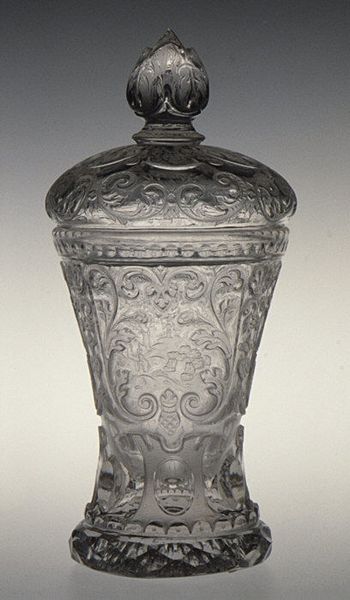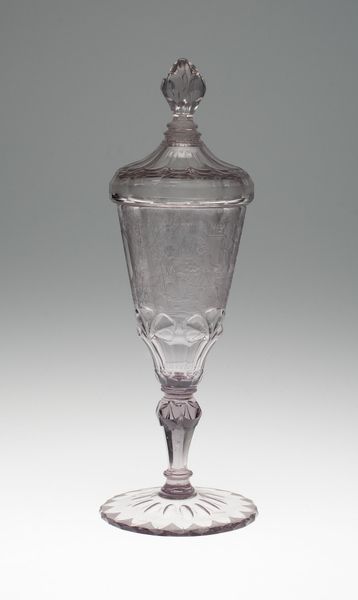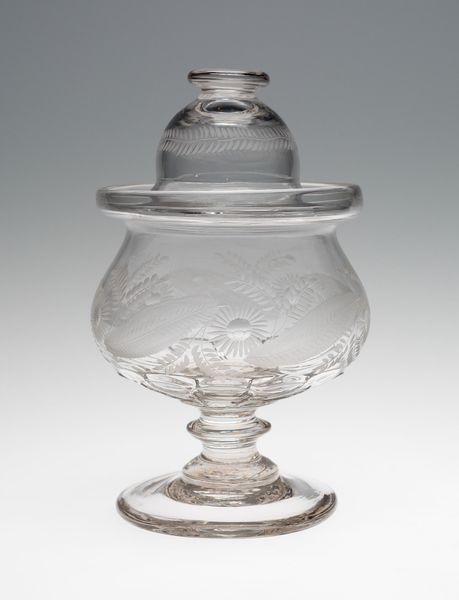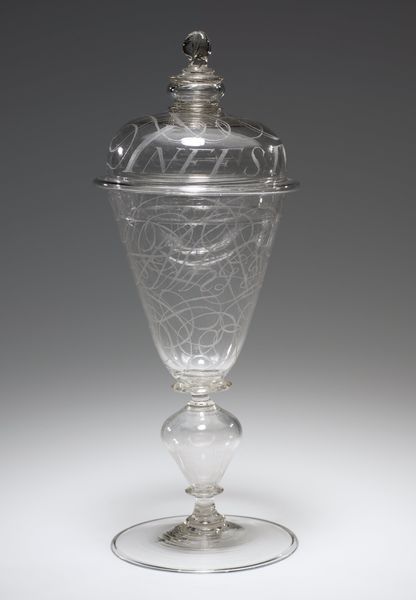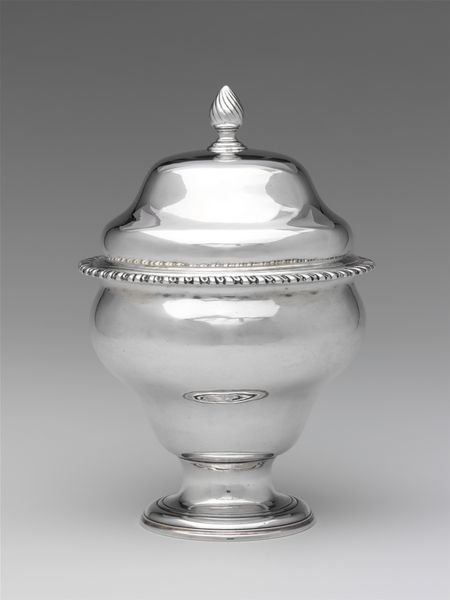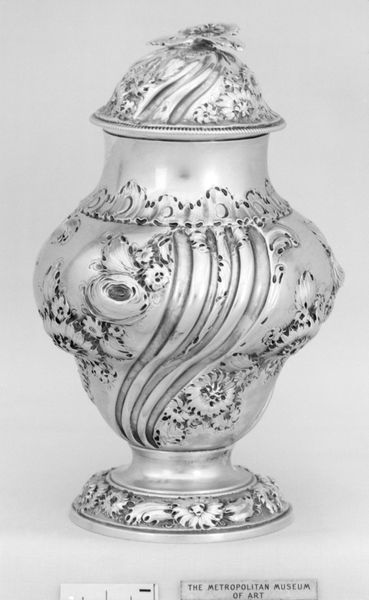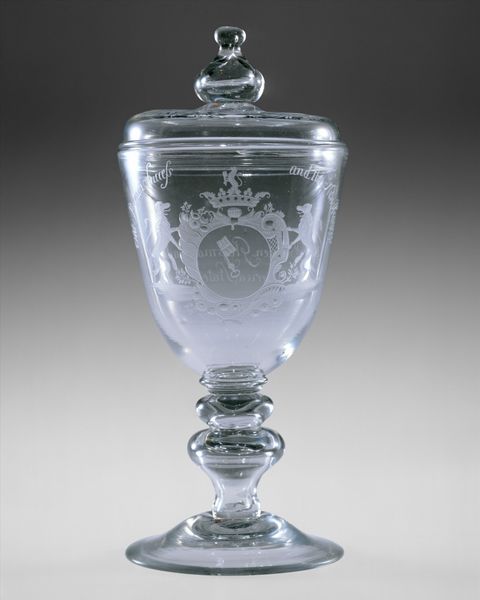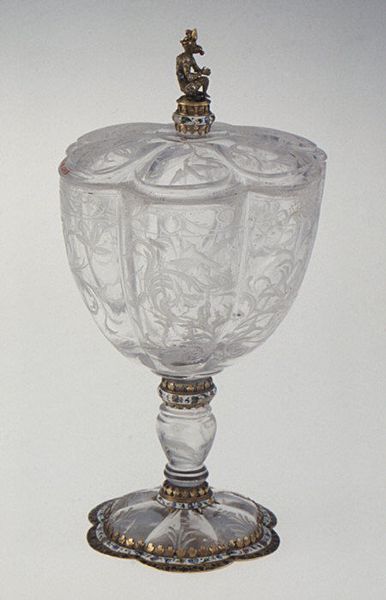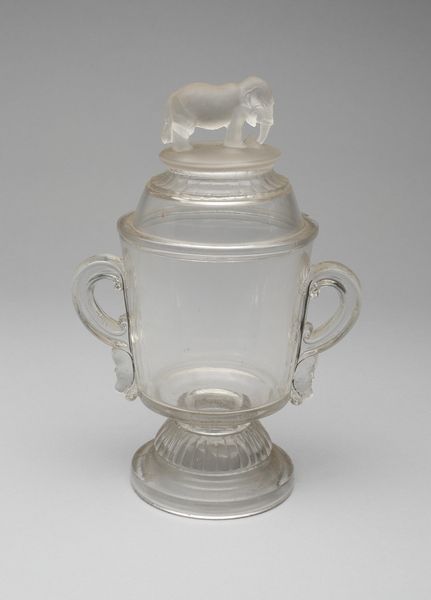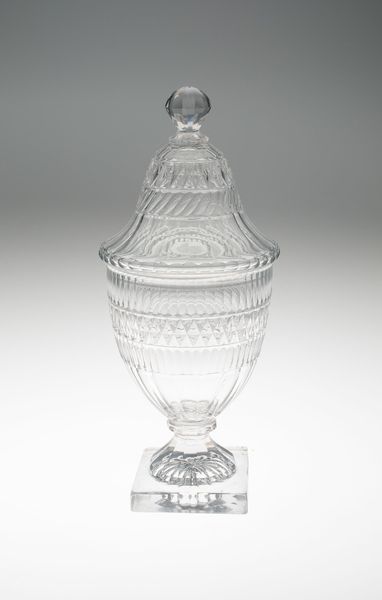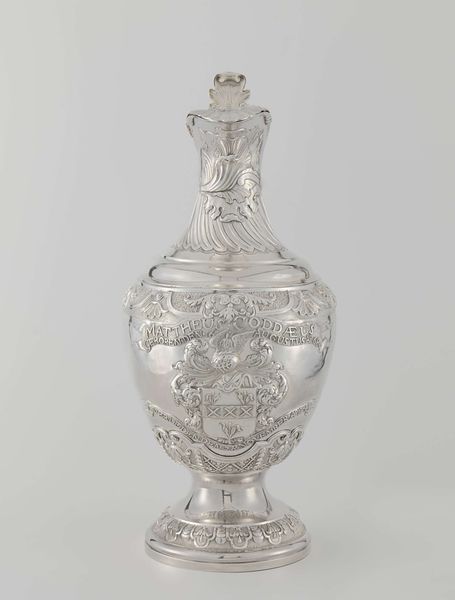
glass, sculpture
#
baroque
#
glass
#
sculpture
#
decorative-art
Copyright: Public Domain
Editor: Here we have a Standing Cup with Cover, crafted between 1695 and 1705 by Franz Gundelach. It's made entirely of glass, and I find the carved details pretty captivating. What catches your eye about this ornate object? Curator: I'm immediately drawn to the production of this glass. The Baroque period was marked by a rise in specialized craftsmanship, but let's consider what it means to transform a raw material like silica through intense labor into something this elaborate. It makes one question the power structures at play. Who benefits from this level of material refinement and luxury? Editor: That's a perspective I hadn't fully considered. I was more focused on the classical scenes etched on the surface. Is there a relationship between the etched design, possibly inspired from Ancient Greece, and the rise of craftmanship and production? Curator: Precisely! We must also think about the tools, the workshops, and the specific skills needed to execute something this intricate. Glassblowing alone was a highly specialized trade. Then, someone else had to cut and engrave the figures. These weren't isolated artists working alone, were they? So who *are* these anonymous glassworkers and artisans and how might the means of production have contributed to the cultural relevance, beyond purely aesthetics? The piece becomes less about beauty and more about the web of production and consumption during its time. Editor: I see your point. By shifting our focus to the process and the labor involved, we gain a deeper appreciation, or even critique, of the historical context that birthed this glass. I'm now really thinking about the labor, class and even trade during that era! Thank you for shedding some light! Curator: Of course. And remember, objects like these can also illuminate the vast distances that exotic raw materials travelled, from the periphery to the center.
Comments
No comments
Be the first to comment and join the conversation on the ultimate creative platform.
